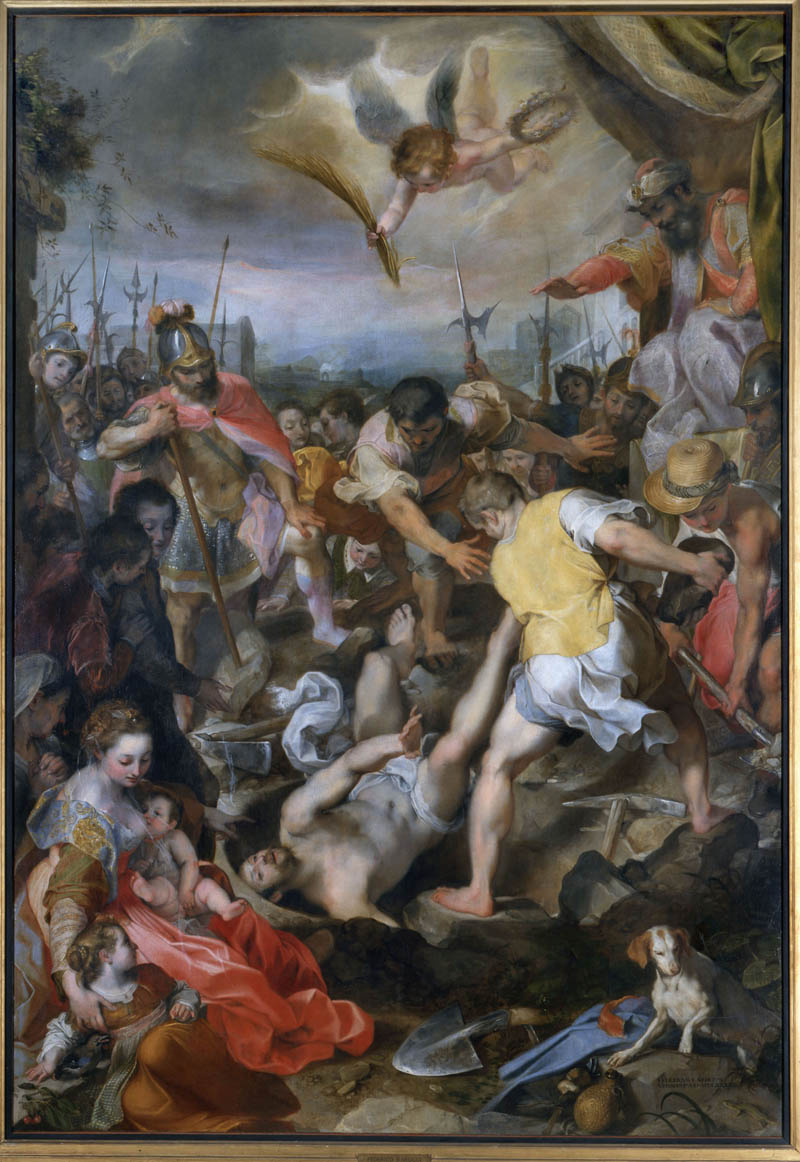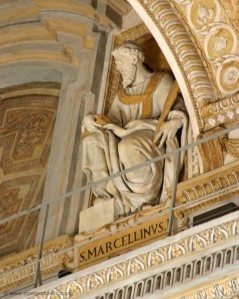The Blessed Virgin Mary is Crowned in Heaven by her Beloved Son.
Illustration: AD MOIOREM DEI GLORIAM
unless otherwise stated.
The month of May Devotions to The Blessed Virgin Mary refer to special Marian Devotions held in The Catholic Church, during the month of May, honouring The Virgin Mary as "The Queen of May". These Services may take place inside or outside of a Church. A "May Crowning" is a Traditional Roman Catholic ritual that occurs in the month of May.
A number of Traditions link the month of May to The Blessed Virggin Mary. King Alfonso X of Castile, in the 13th-Century, wrote in his Cantigas de Santa Maria about the special honouring of The Blessed Virgin Mary during specific dates in May. Eventually, the entire month was filled with Special Observances and Devotions to The Blessed Virgin Mary.
"Queen Of The Angels, Queen Of The May".
Available on YouTube at
The origin of the conventional May Devotion is still relatively unknown. Herbert Thurston identifies the 17th-Century as the earliest instance of the adoption of the custom of Consecrating the month of May to The Blessed Virgin by Special Observances. It is certain that this form of Marian Devotion began in Italy. Around 1739, witnesses speak of a particular form of Marian Devotion in May in Grezzano, near Verona. In 1747, the Archbishop of Genoa recommended the May Devotion as a Devotion for the home. Specific Prayers for them were promulgated in Rome in 1838.
From Rome, the practice spread to the other Jesuit Colleges and thence to nearly every Catholic Church of The Latin Rite. In Rome, by 1813, May Devotions were held in as many as twenty Churches. From Italy, May Devotions soon spread to France. In Belgium, the May Devotions, at least as a Private Devotion, were already known by 1803. The Tradition of honouring The Blessed Virgin Mary, in a month-long May Devotion, spread eventually around The Roman Catholic World in the 19th-Century, together with a month-long Devotion to Jesus in June and The Rosary in October.
"As I Kneel Before You".
Available on YouTube at
English: The Crowning of The Virgin Mary in Heaven
by The Holy Trinity.
Español: Coronación de la Virgen.
Deutsch: Die Krönung Marias.
Artist: Diego Velázquez (1599–1660).
Date: Circa 1645.
Current location: Prado Museum, Madrid, Spain.
Source/Photographer: https://www.museodelprado.es/en/the-collection/
(Wikimedia Commons)
The Litany of Loreto.
Available on YouTube at
Litany of Loreto.
The Litany of Loreto is used to honour Mary, The Mother of God. The Litany recalls Mary's unique role in our salvation history as The Mother of Our Saviour and invokes various Titles for her as a way of honouring her and reminding us of the role she has played.
The Litany owes many of its Praises to The Greek Akathist Hymn, which was first translated into Latin in Venice around 800 A.D. The other Titles and Praises addressed to Mary are found extensively in the writings of The Early-Church Fathers of the first six Centuries A.D.
The Litany owes many of its Praises to The Greek Akathist Hymn, which was first translated into Latin in Venice around 800 A.D. The other Titles and Praises addressed to Mary are found extensively in the writings of The Early-Church Fathers of the first six Centuries A.D.
Over time, a number of Titles for Our Lady were removed and added to The Litany. Originally, The Litany had fifteen additional Titles, such as Our Lady of Humility, Mother of Mercy, Temple of The Spirit, Gate of Redemption, and Queen of Disciples. Recent history has seen the addition of five Titles. The last four Titles of The Litany, which refer to The Immaculate Conception, The Assumption, The Rosary, and Mary as The Queen of Peace, are of recent origin. The latest addition, Mother of The Church, was added by Pope Saint John Paul II.
Most likely, The Litany was composed in or around Paris between the years 1150 and 1200. It gets its name from the Italian shrine (Loreto) where it was adopted in 1558. Pope Sixtus V approved its use in public Worship in 1587. The Litany is used especially during May Services, the month Traditionally Dedicated to The Blessed Virgin Mary. It is also used at Benediction, and some Congregations use it in The Divine Office. The Litany is approved for public use and carries a Partial Indulgence.








